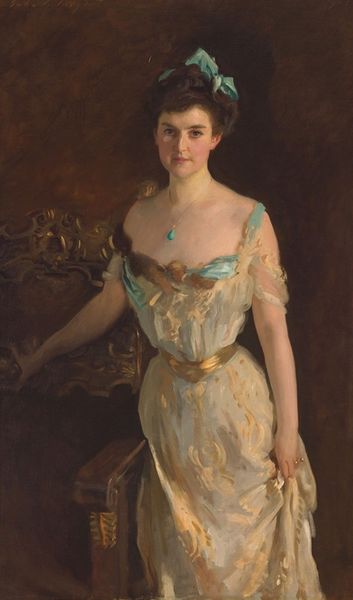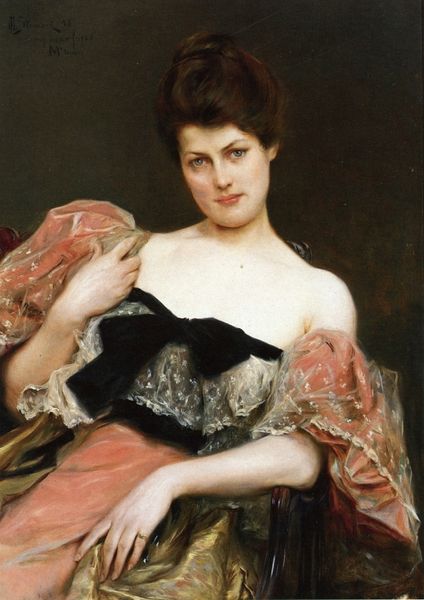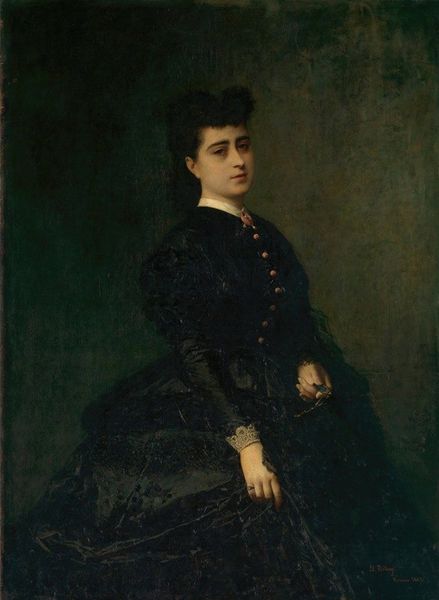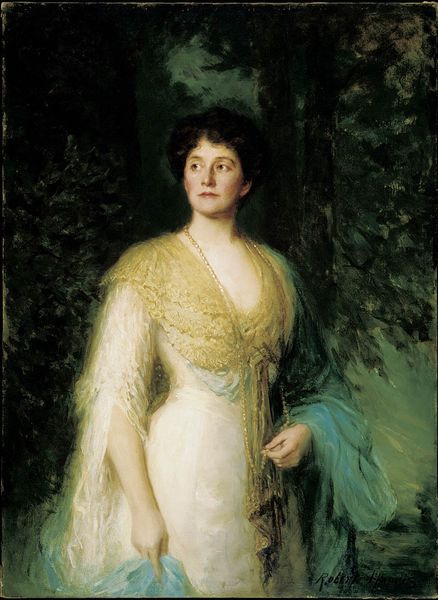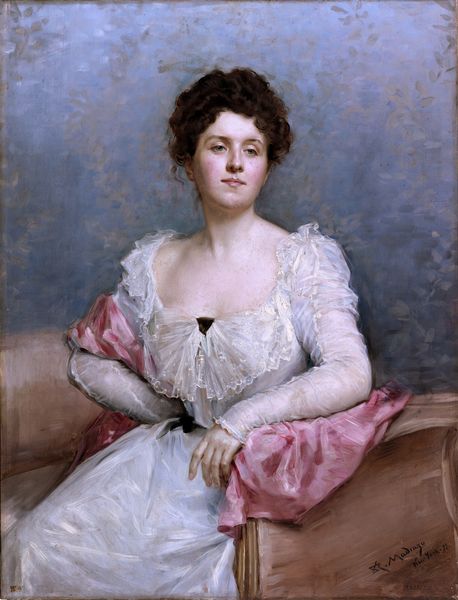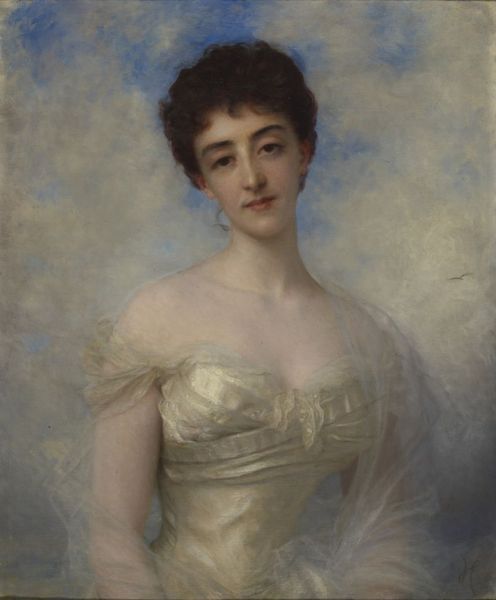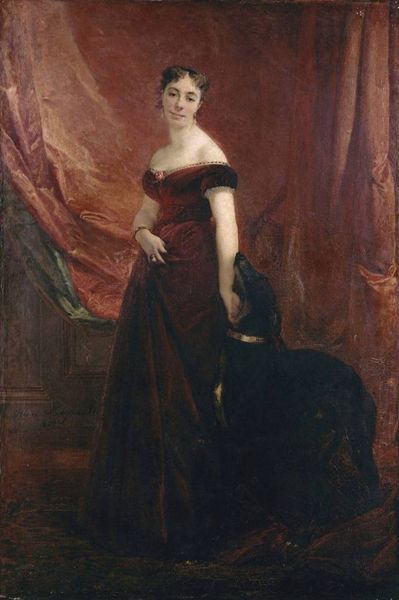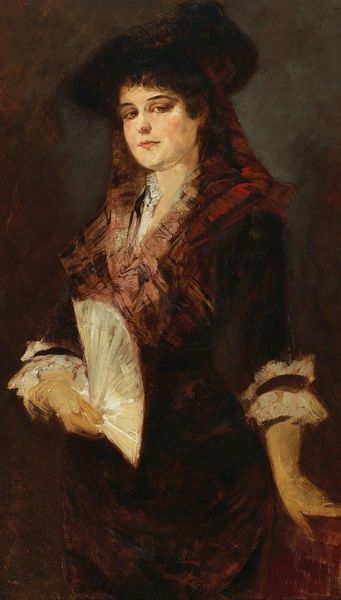
Copyright: Public Domain: Artvee
Carolus-Duran captured this woman with oil on canvas, embedding cultural echoes within her portrait. Observe the choker necklace. What was once a symbol of submission—seen in portraits of enslaved people—became a fashionable item adorning the necks of Europe’s elite. This transformation encapsulates humanity’s uncanny ability to reshape symbols. The flowers pinned to her chest echo those seen in depictions of Flora, the Roman goddess of spring, connoting fertility and renewal. Across time, the motif of the adorned figure resurfaces. We see it in ancient Egyptian art, where jewelry signified status and protection. Consider the psychological weight these adornments carry, reflecting not just personal identity but a collective desire for beauty, status, and belonging. The power of these symbols lies in their ability to evoke deep-seated emotions and cultural memories. They speak to the human subconscious, connecting us to a broader historical narrative. As symbols morph, they remind us of the cyclical nature of history, where motifs are perpetually reborn, laden with shifting cultural significance.
Comments
No comments
Be the first to comment and join the conversation on the ultimate creative platform.




